Our Work
In our photo gallery, we showcase some of our before-and-after case examples. The gallery is regularly updated with current cases. The treatment can make a significant difference in your quality of life.
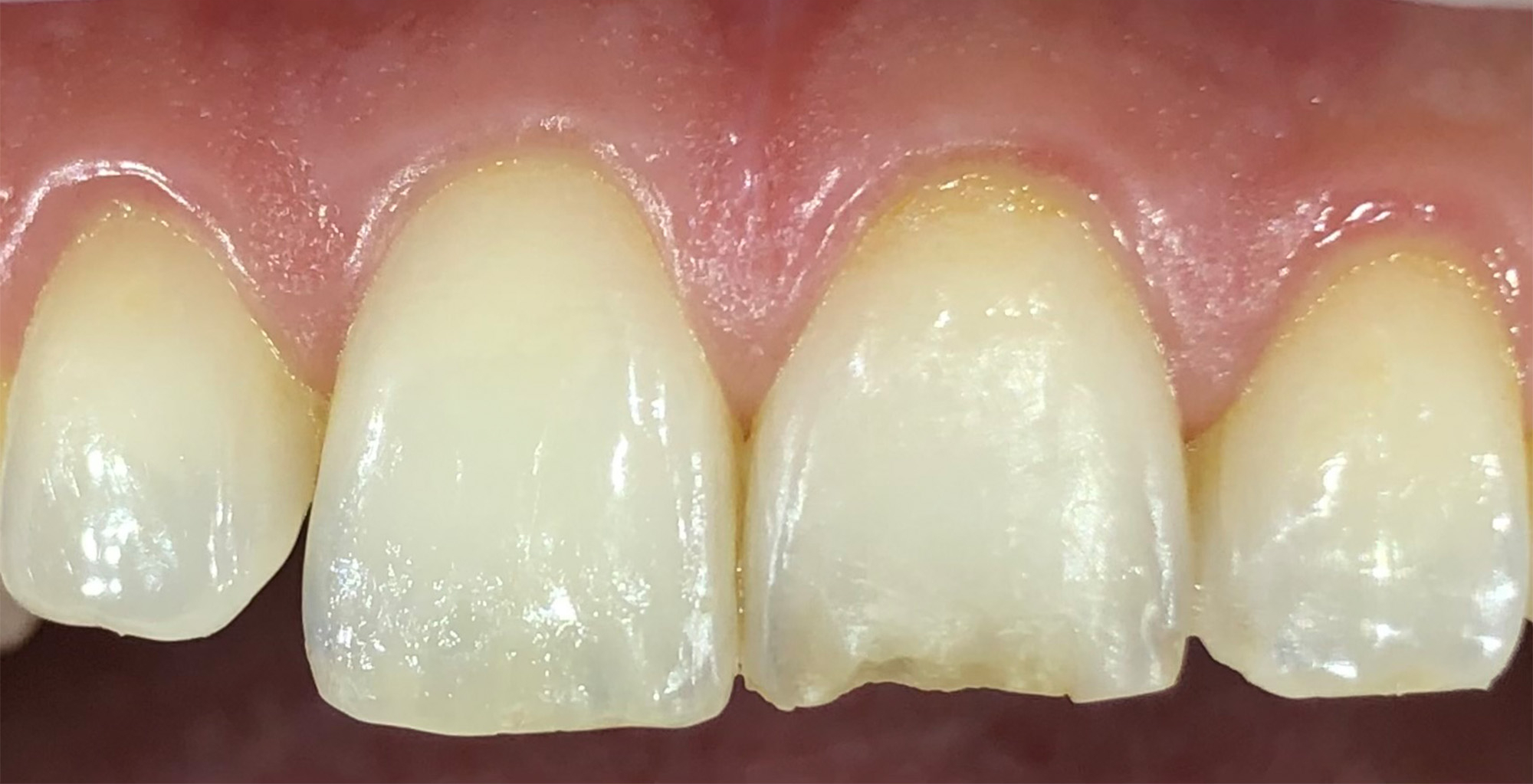
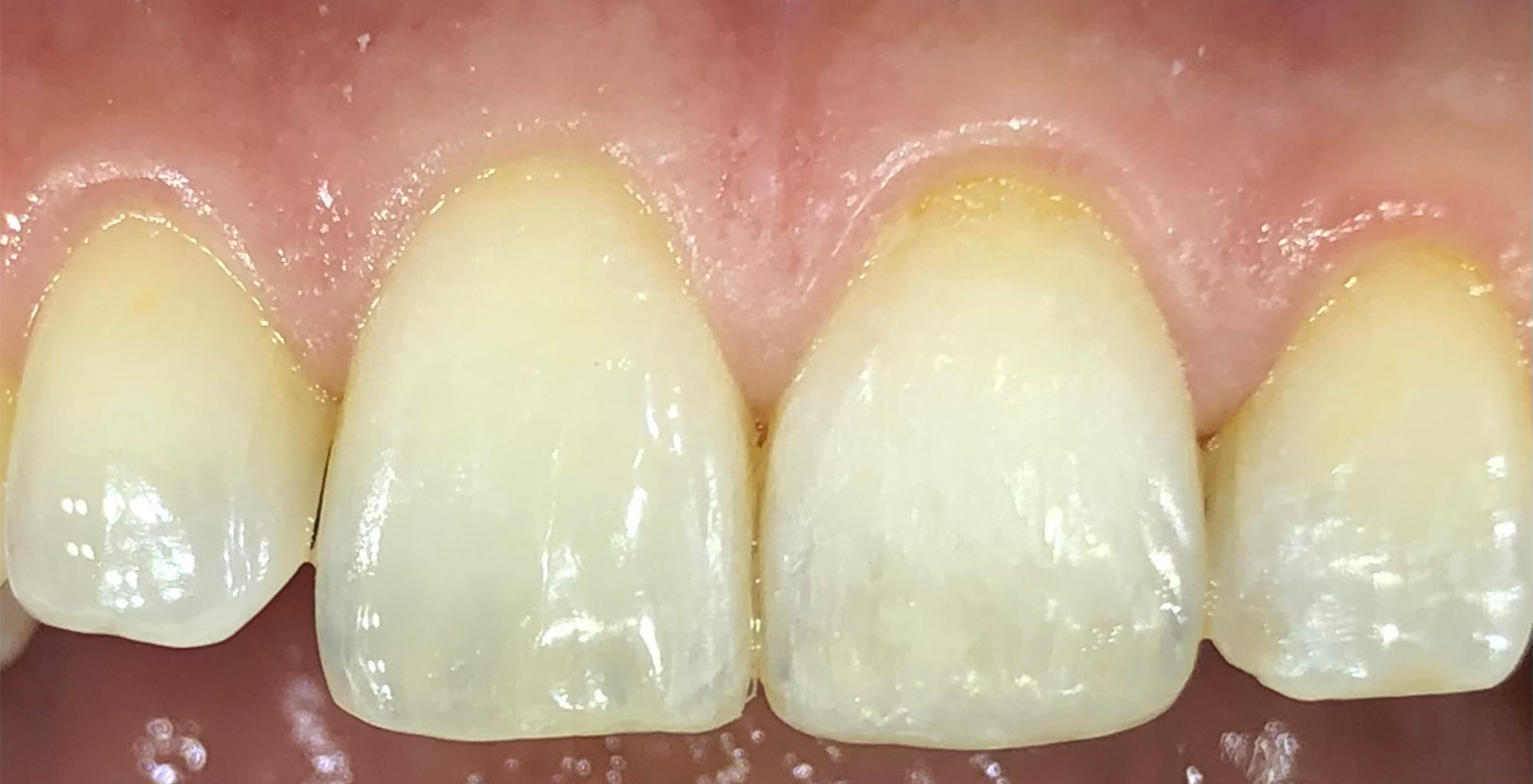
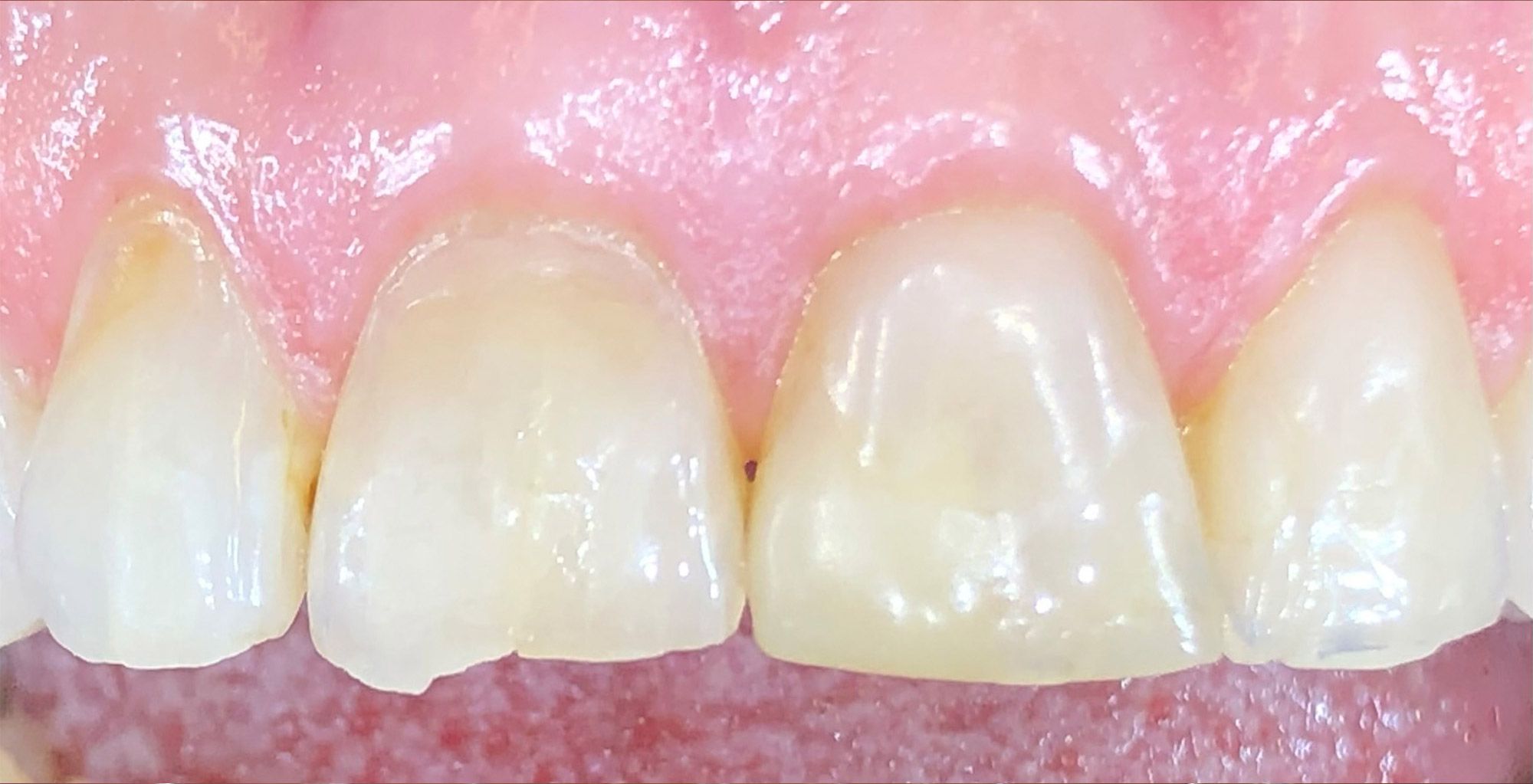
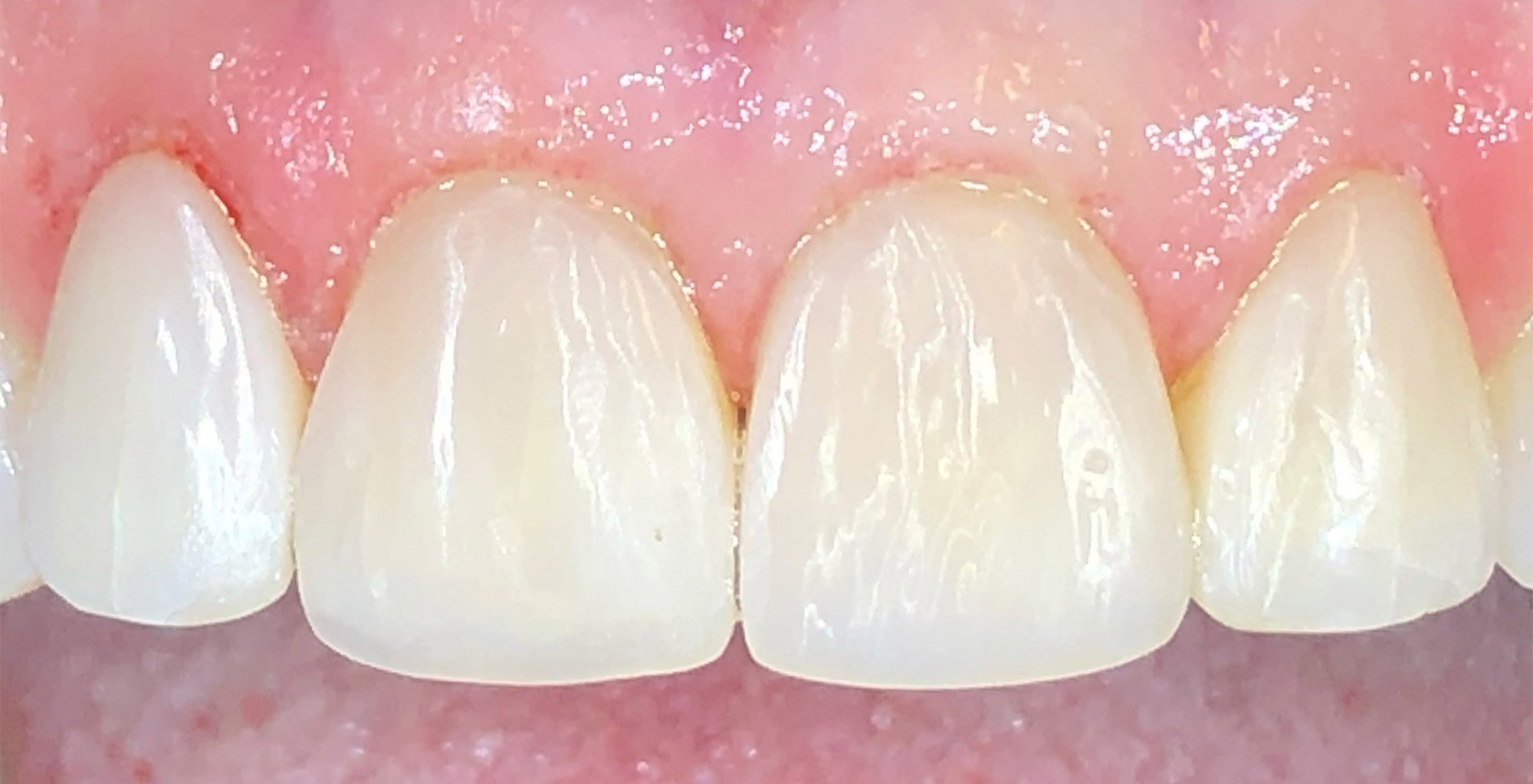
Anterior Tooth Trauma / Incisal Edge Fracture
When the edge of a tooth breaks off, it is referred to as anterior tooth trauma or an incisal edge fracture. This often occurs in the front teeth, either due to enamel weakened by wear or as a result of trauma—i.e., a fracture caused by an accident.
Incisal edge fractures can be restored very naturally using a special layering technique with composites or with laboratory-fabricated ceramic veneers. It is important to consider how the patient bites. In cases of deep bite or parafunctions such as grinding or clenching, excessive load should be avoided during the restoration process. In many cases, it is advisable for affected patients to wear a night guard while sleeping.
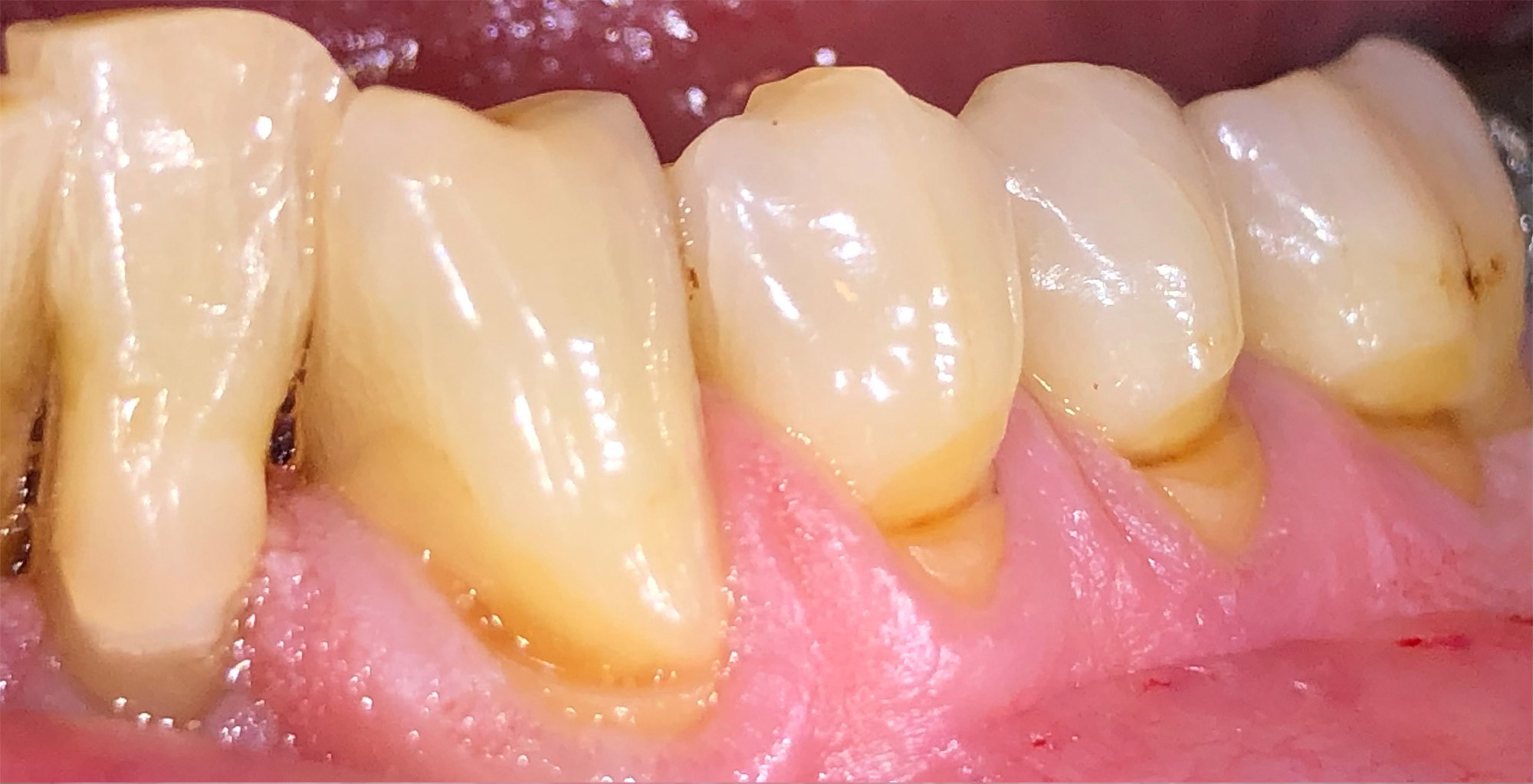
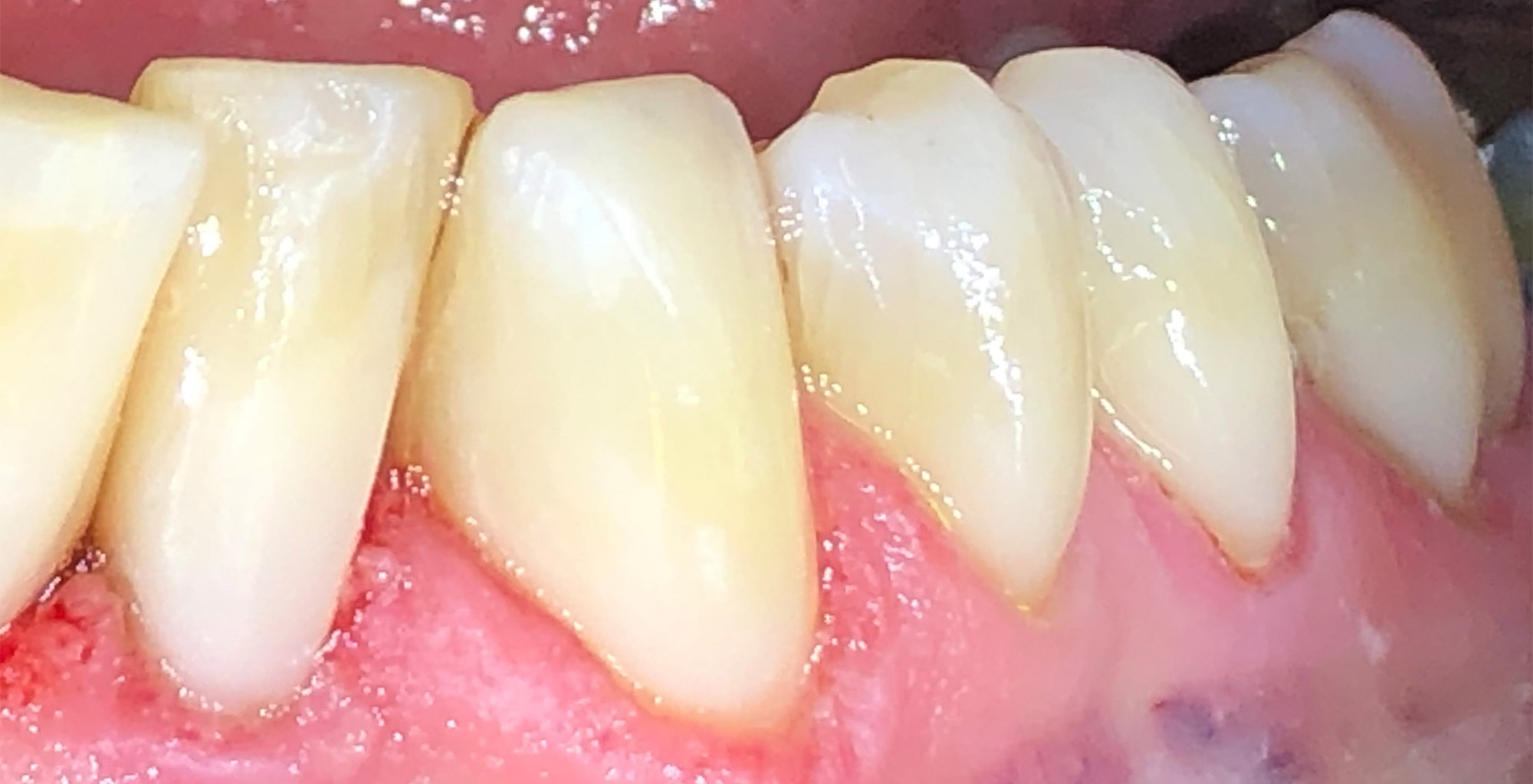
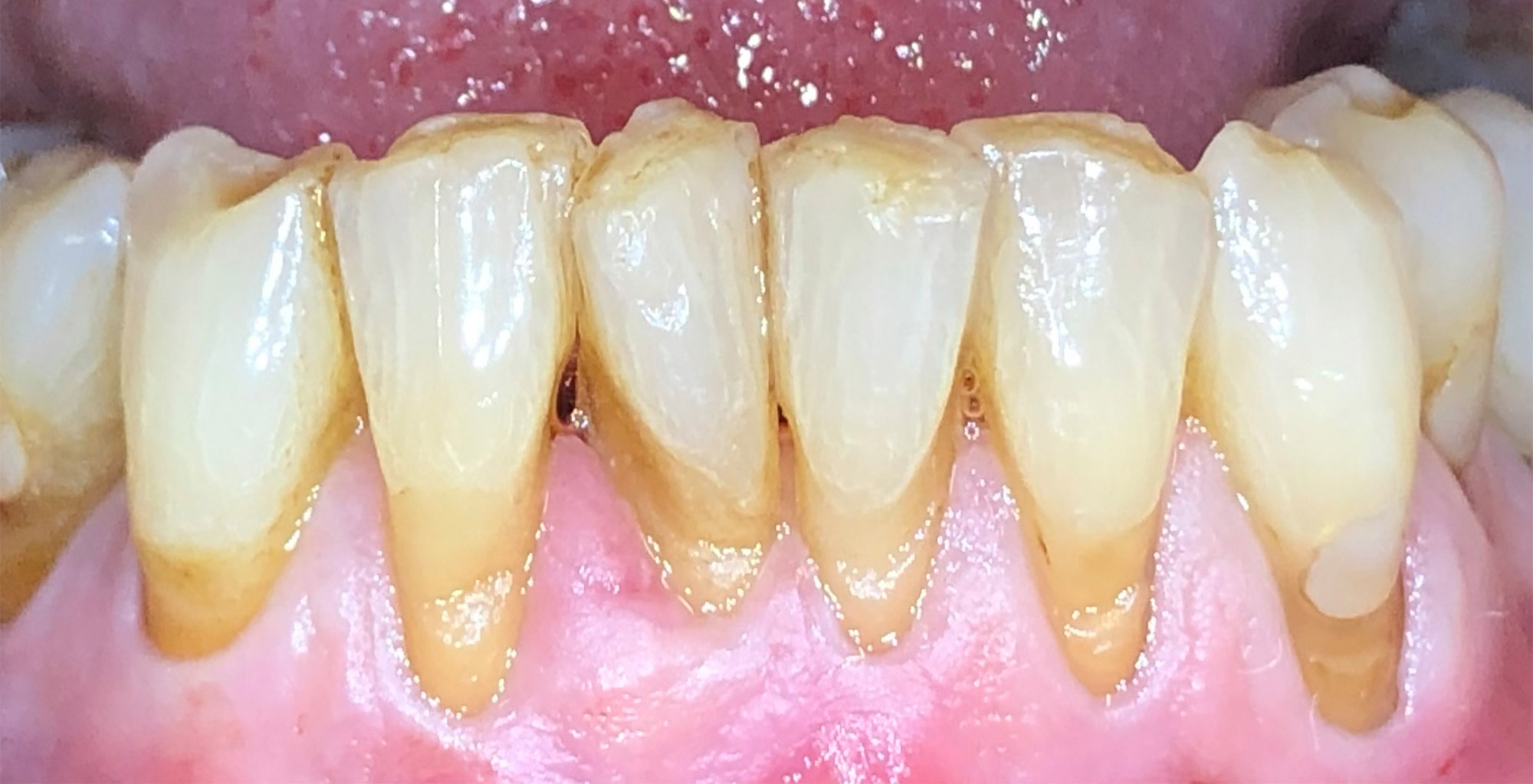
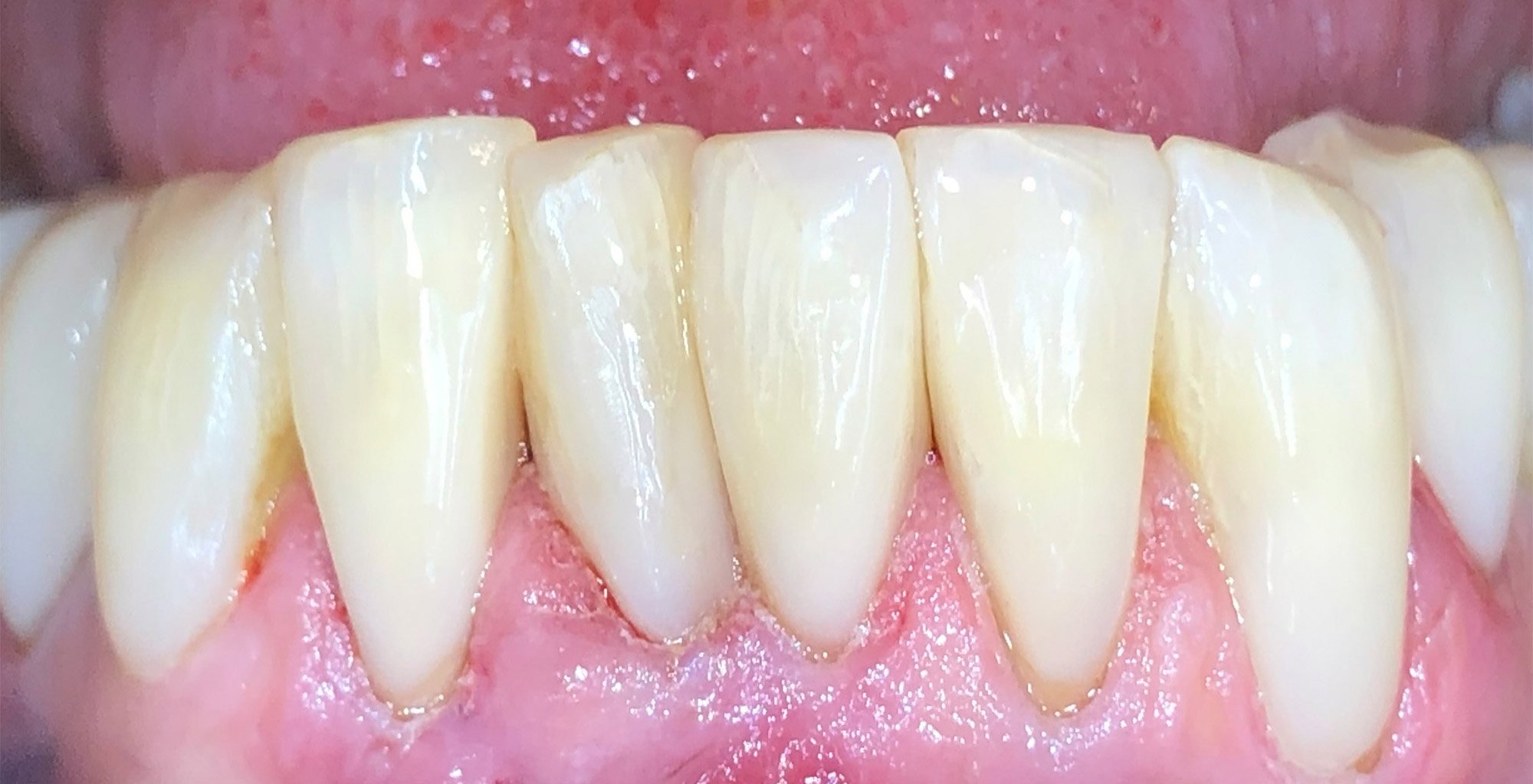
Cervical Defects (Wedge-Shaped Defects / Cervical Caries)
Exposed tooth necks are a common phenomenon. The gum line can recede for various reasons, exposing the cervical part of the tooth. These areas are often sensitive because they consist of dentin, which contains nerve endings and can react sensitively to air or cold food and drinks. These wedge-shaped defects (indentations) on the exposed tooth necks can result from brushing technique, but recent findings also show that parts of the tooth neck can completely fracture due to parafunctional habits such as teeth grinding or clenching.
Deep cervical defects should definitely be restored — firstly, because the indentations form a niche for plaque and buildup, and secondly, because they are often carious, even if not immediately apparent. Simply "waiting and observing" will not lead to improvement, but rather to deterioration. In some patients, the defects are so deep that the nerve becomes visible through the thinned dentin. Once the cervical areas are restored with composite material, they are protected from further damage, become less sensitive, and are easier to keep clean.
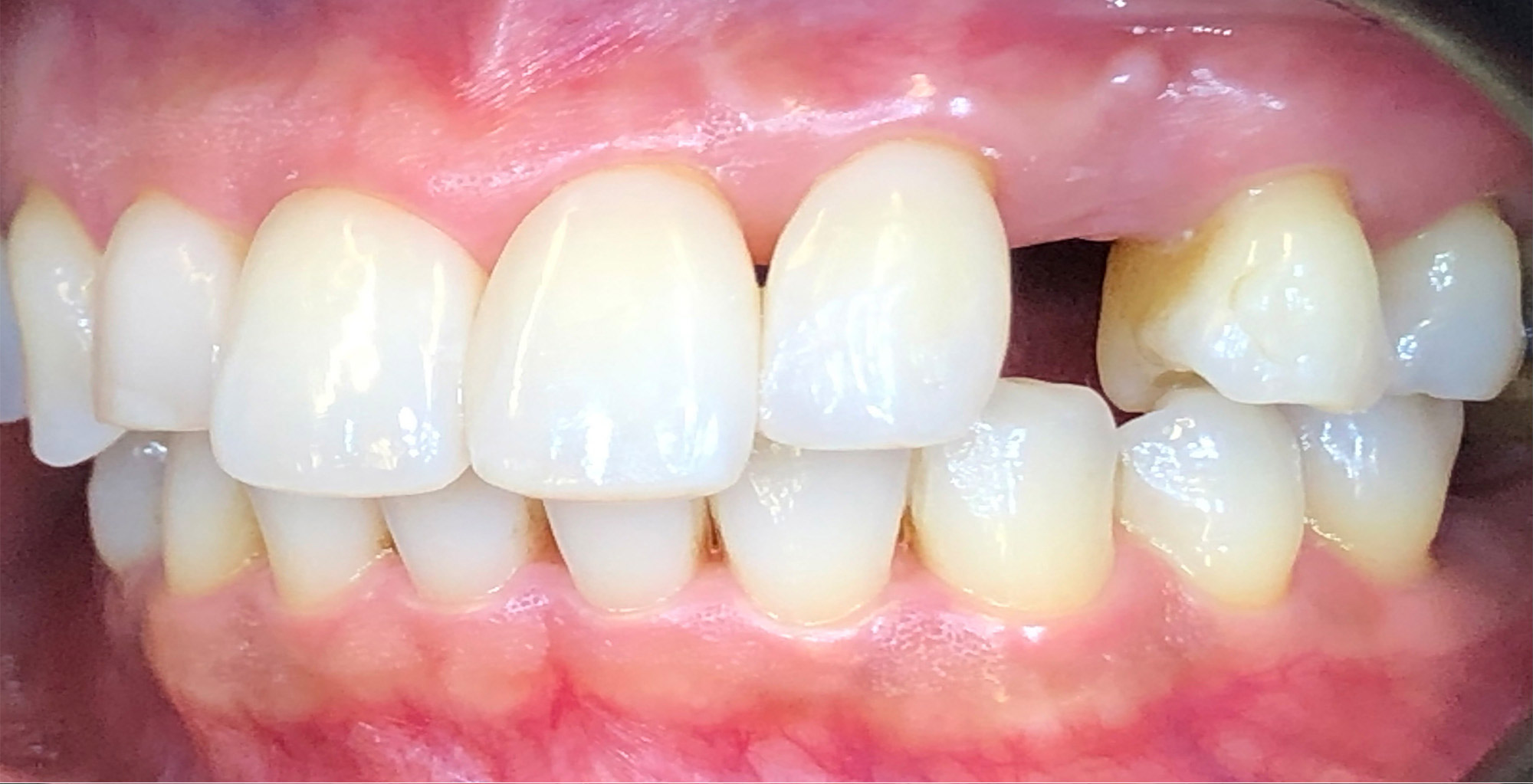
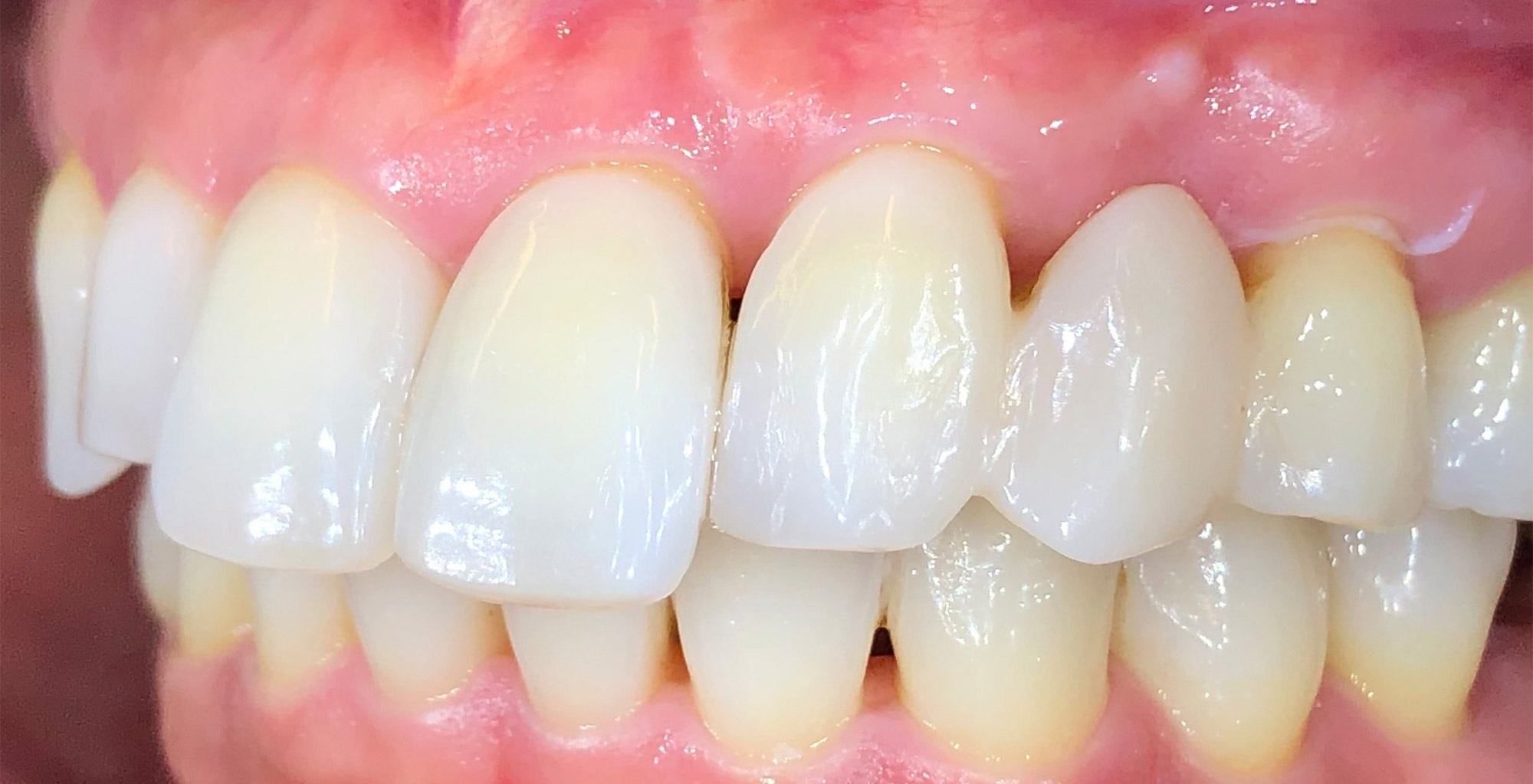
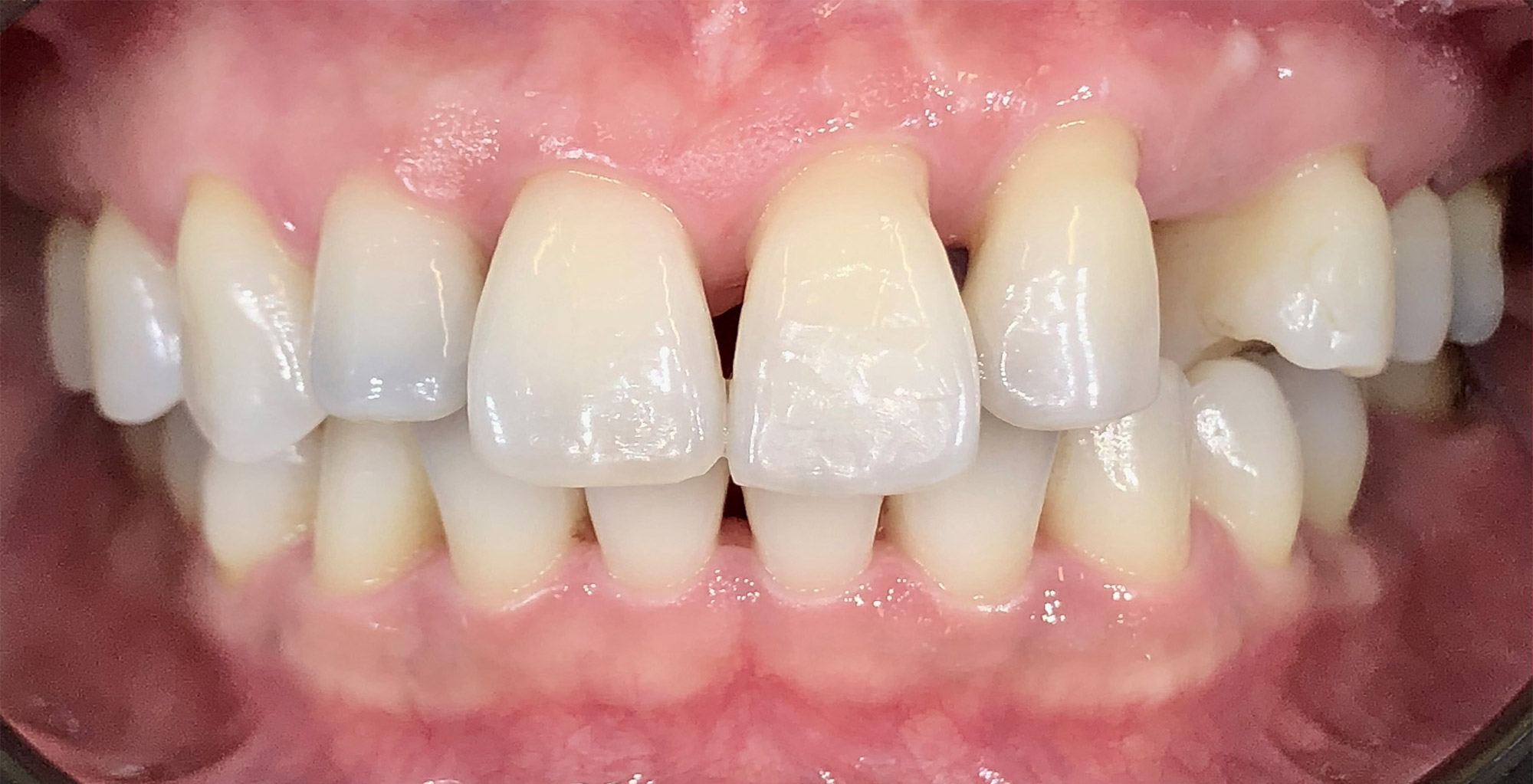
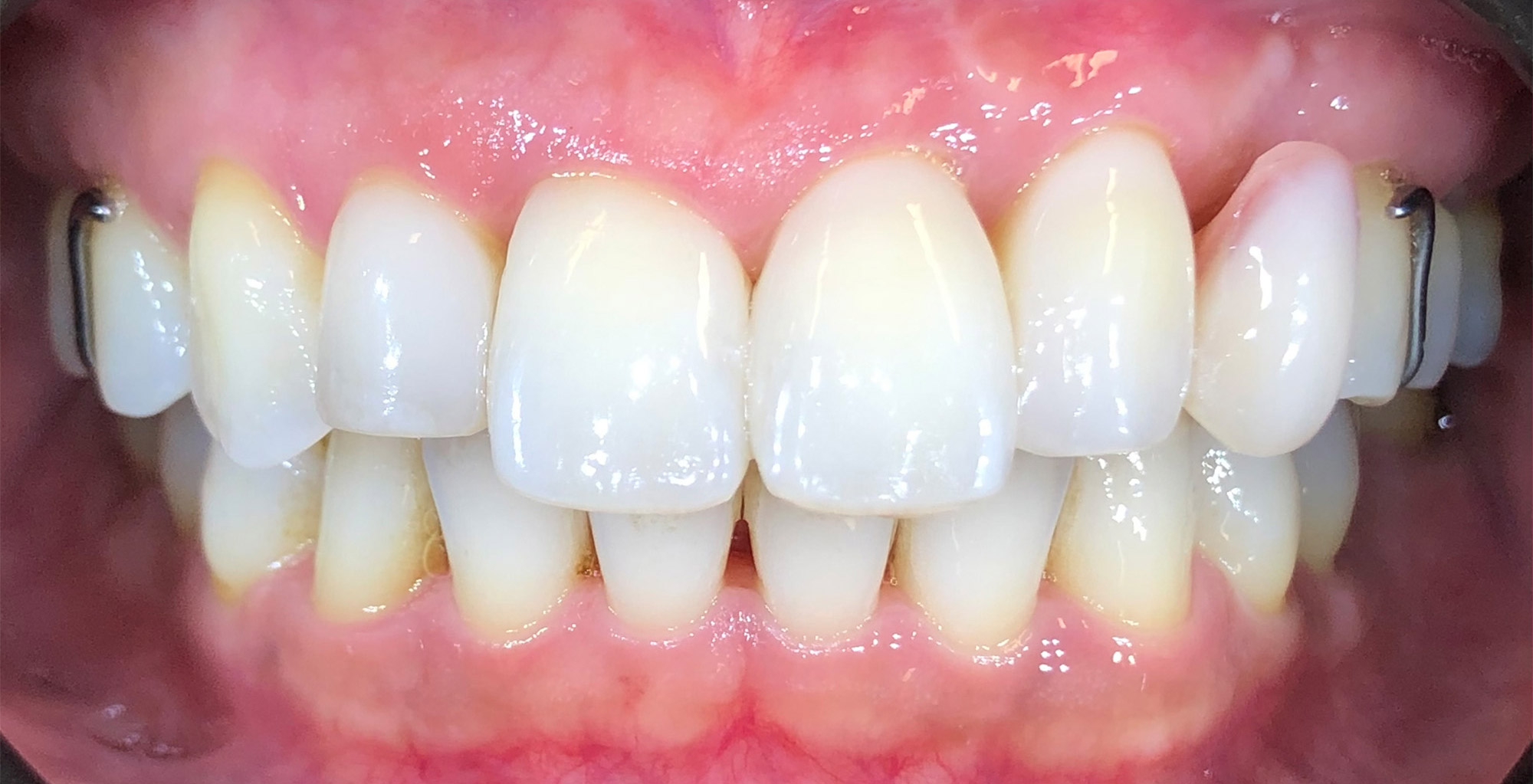
Periodontally Induced Gaps
Periodontitis is a chronic disease affecting the supporting structures of the teeth. It leads to the gradual recession of the gum line and, as the disease progresses, to bone loss around the teeth. This condition presents not only the challenge of managing chronic inflammation but unfortunately also causes aesthetic concerns for affected patients. Our patient had successfully completed periodontal treatment and presented with inflammation-free gums and excellent oral hygiene, seeking an aesthetic improvement.
She was particularly troubled by the “black triangles” — the triangular gaps between the teeth that appear as a result of bone loss — which she found very bothersome in her daily life. These gaps were corrected in a minimally invasive way using direct aesthetic composite restorations. This approach is especially suitable since there is always a possibility that one or more teeth may be lost in the future, and ceramic restorations, being non-modifiable, are not ideal in such cases.
Due to the disease, the patient had previously lost her upper left canine and had to wear a single-tooth denture. I modeled a composite tooth and integrated it as part of a direct fiber-reinforced bridge. The patient is very pleased with this solution.
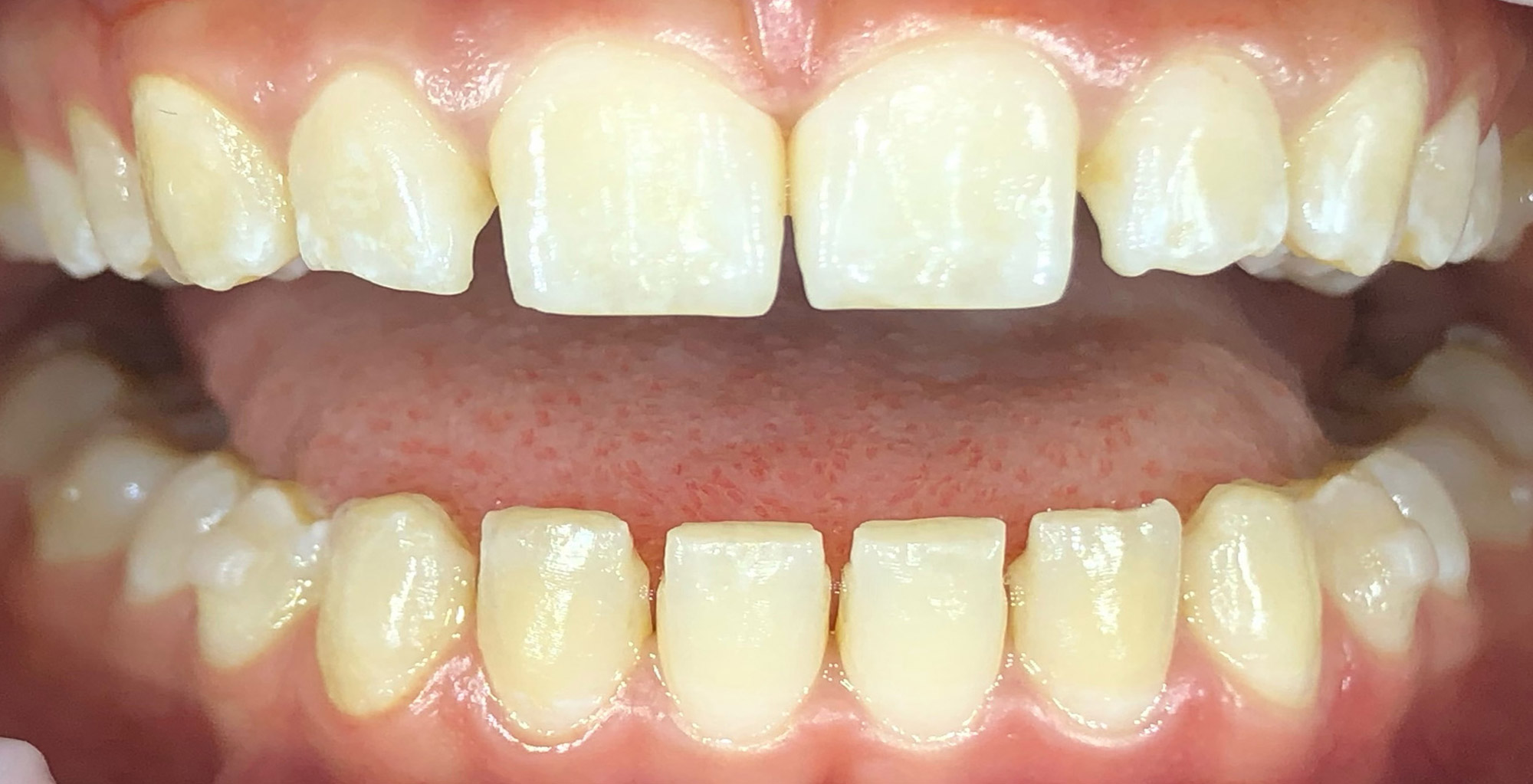
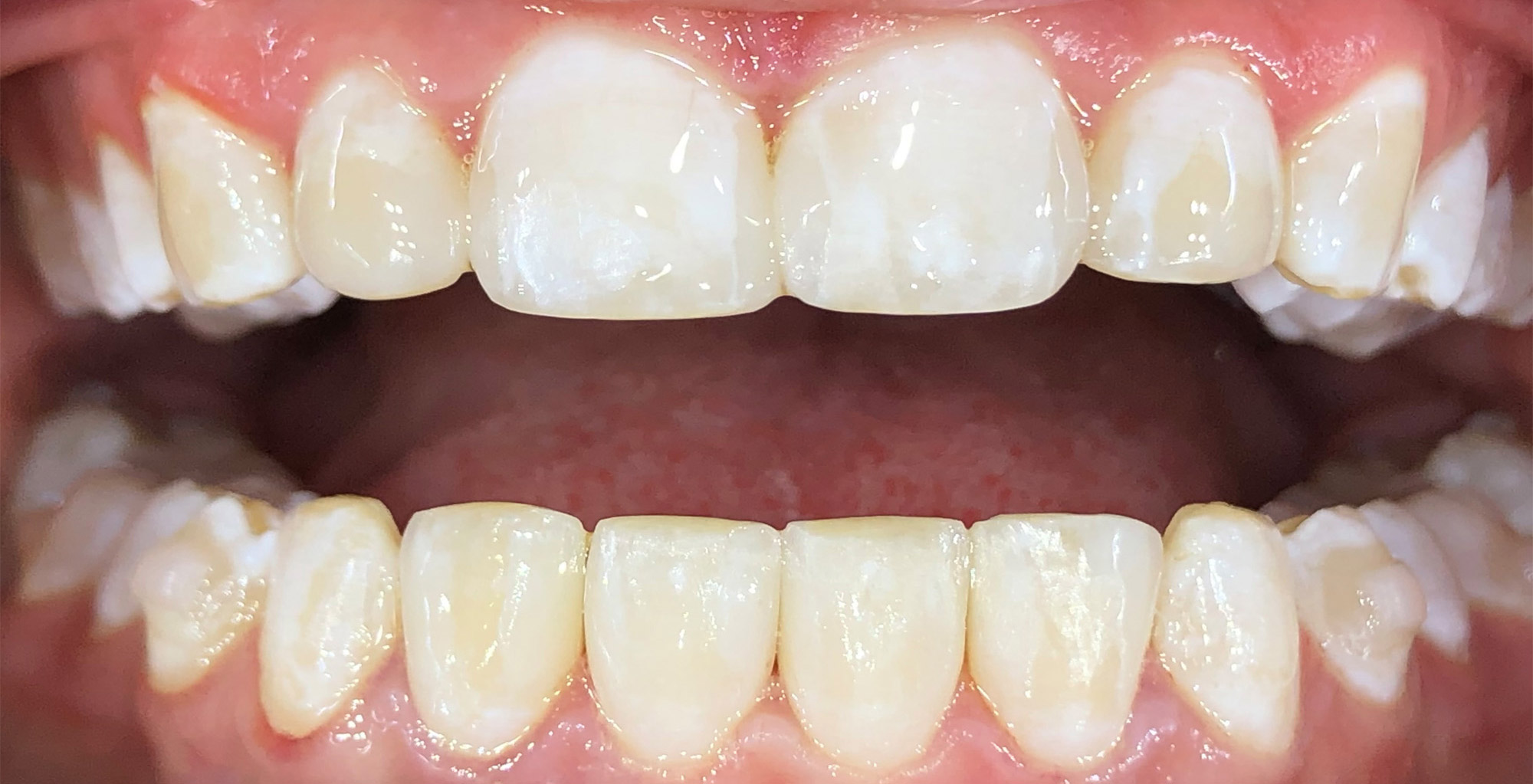
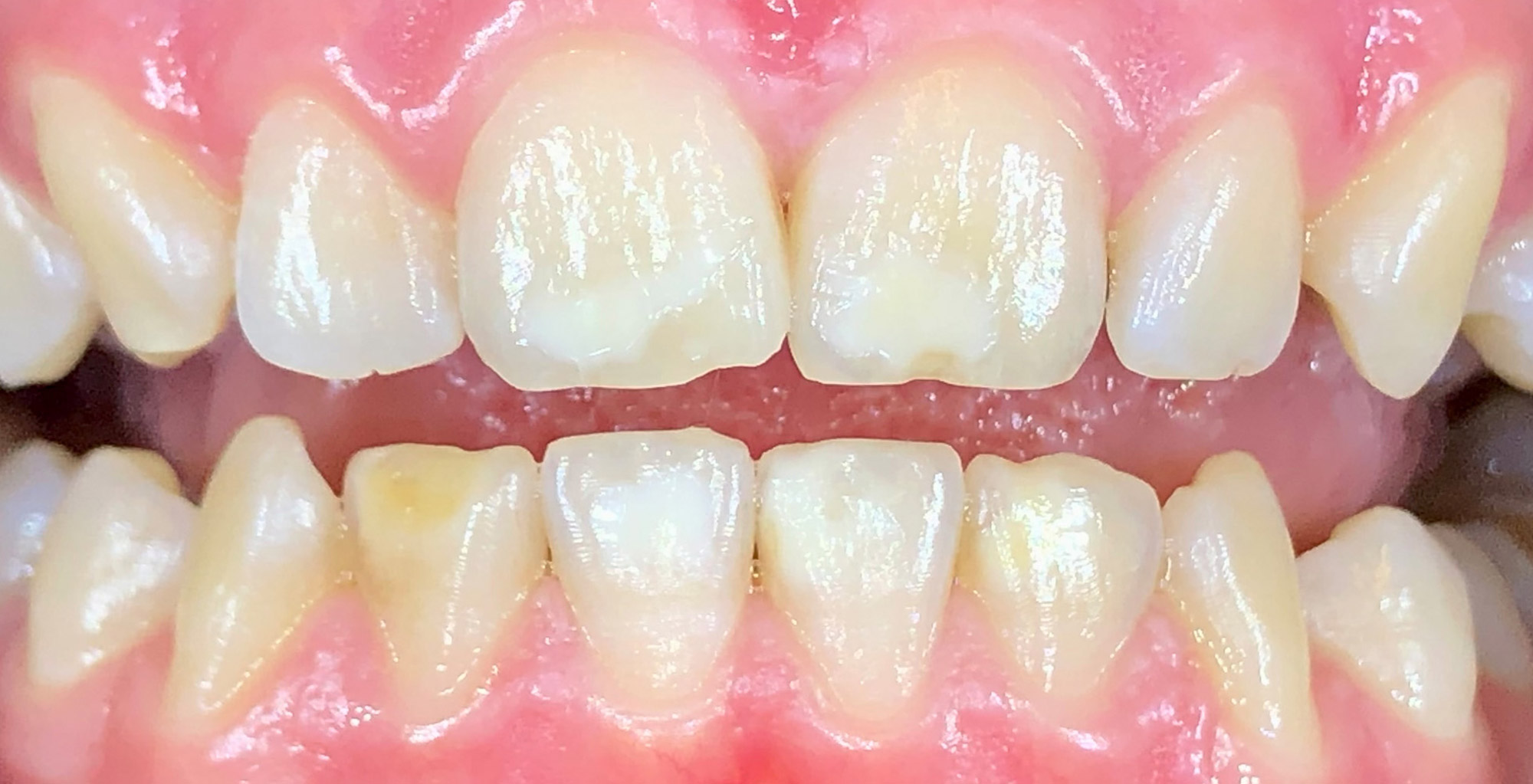
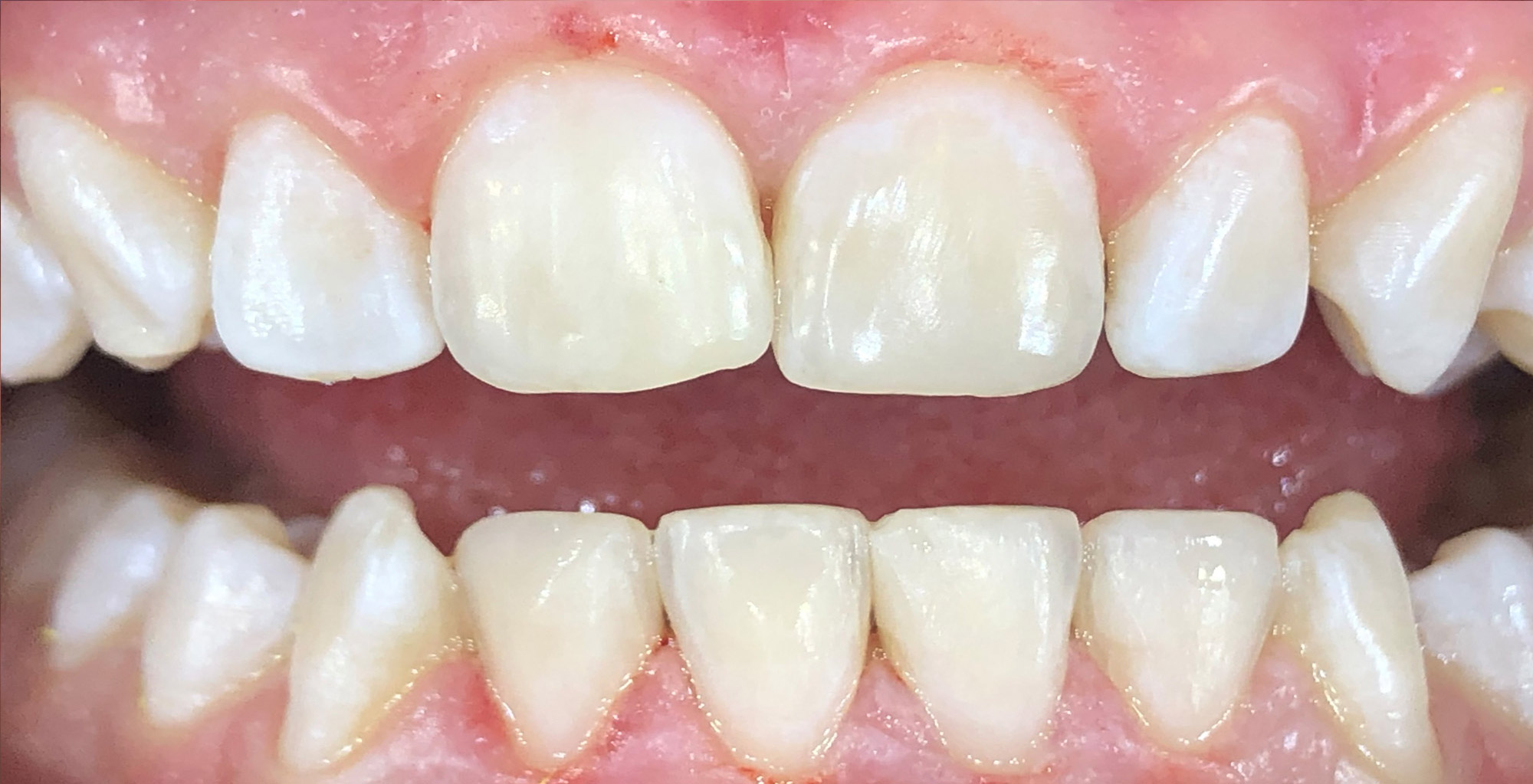
Enamel Defects (Hypoplasia)
There are various types of enamel defects (hypoplasia), which may be either genetic — as in the first case of mild amelogenesis imperfecta in a young patient — or idiopathic, such as in the second case of MIH (Molar-Incisor Hypomineralization). Enamel hypoplasia involves underdeveloped enamel, resulting in a brittle, patchy, chalky, or anatomically insufficient appearance of the teeth.
Through the minimally invasive use of our aesthetic filling materials, we were able to stabilize the teeth in both cases — functionally as well as aesthetically.
The white spots visible on all teeth in the “after” photo are a temporary side effect of the treatment process, as the teeth need to remain dry during the procedure. These spots are reversible and will no longer be visible once the teeth are again surrounded by saliva in the closed mouth.
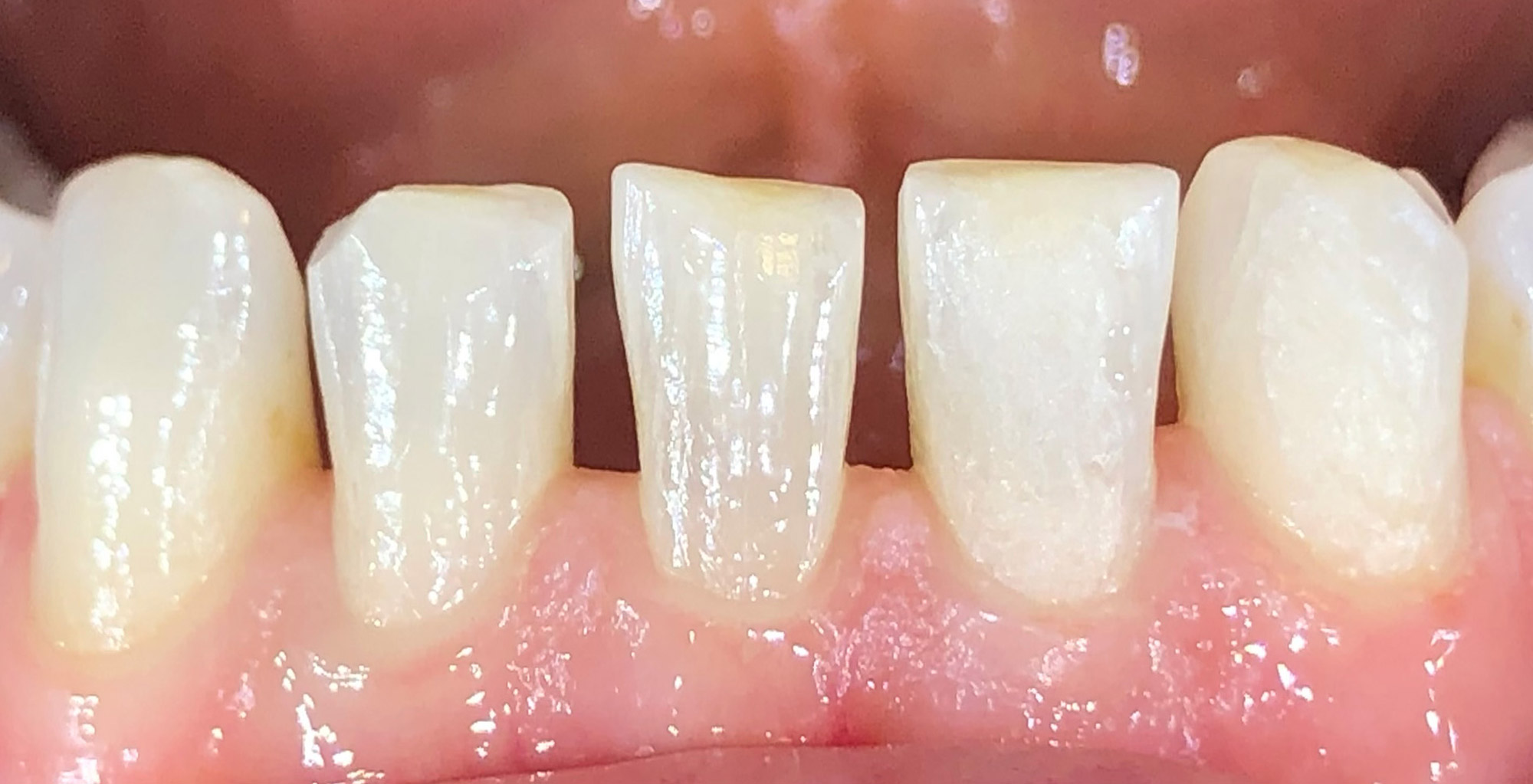
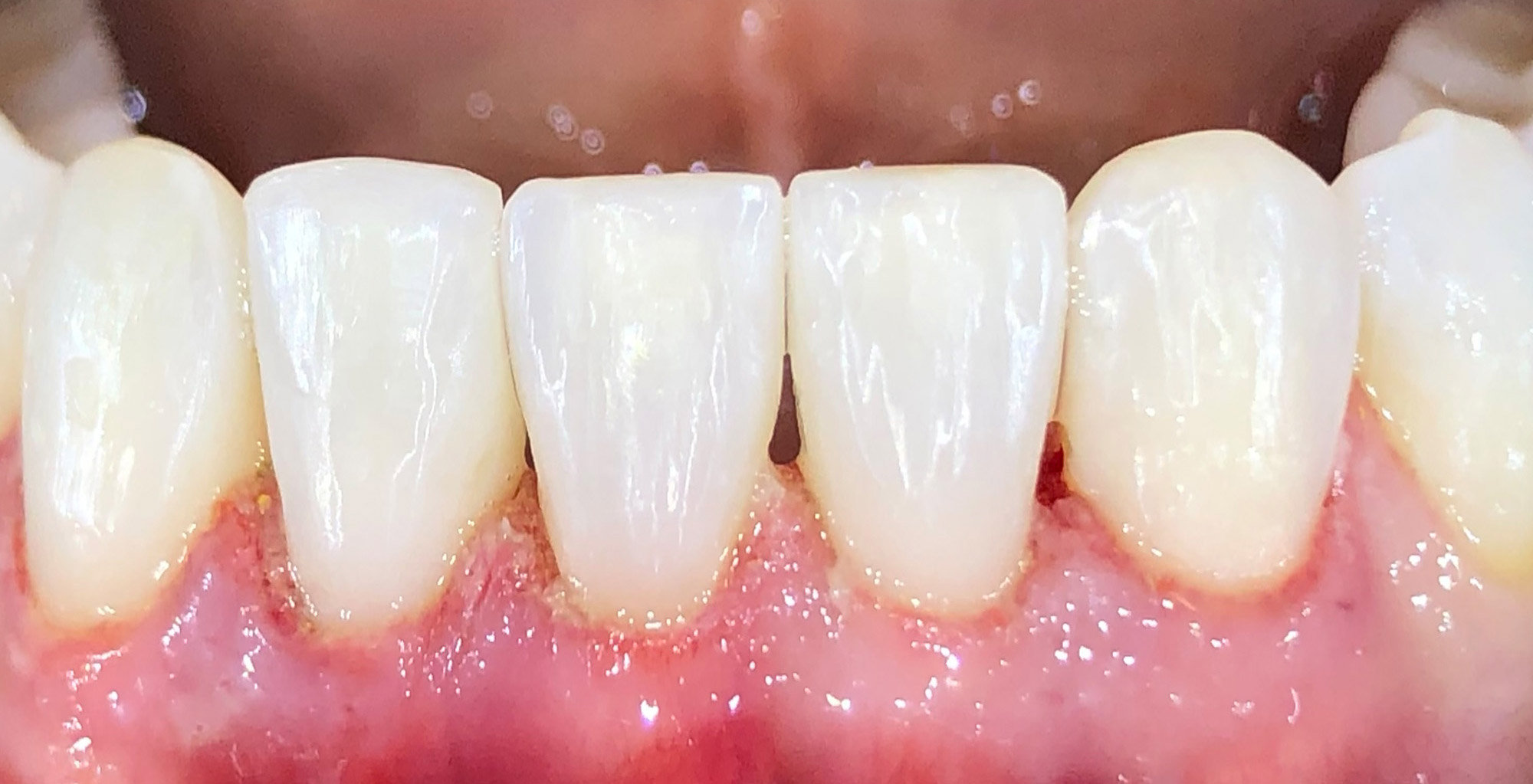
Tooth Widening / Shape Correction
Widening of the lower front teeth using direct composite restorations.
The treatment was carried out after completion of orthodontic tooth alignment using clear aligners (in this case, Invisalign). The patient was missing one lower incisor, and through the combination of orthodontic treatment and aesthetic build-ups, an attractive and harmonious result was achieved — creating the visual appearance of a complete, gap-free row of teeth.
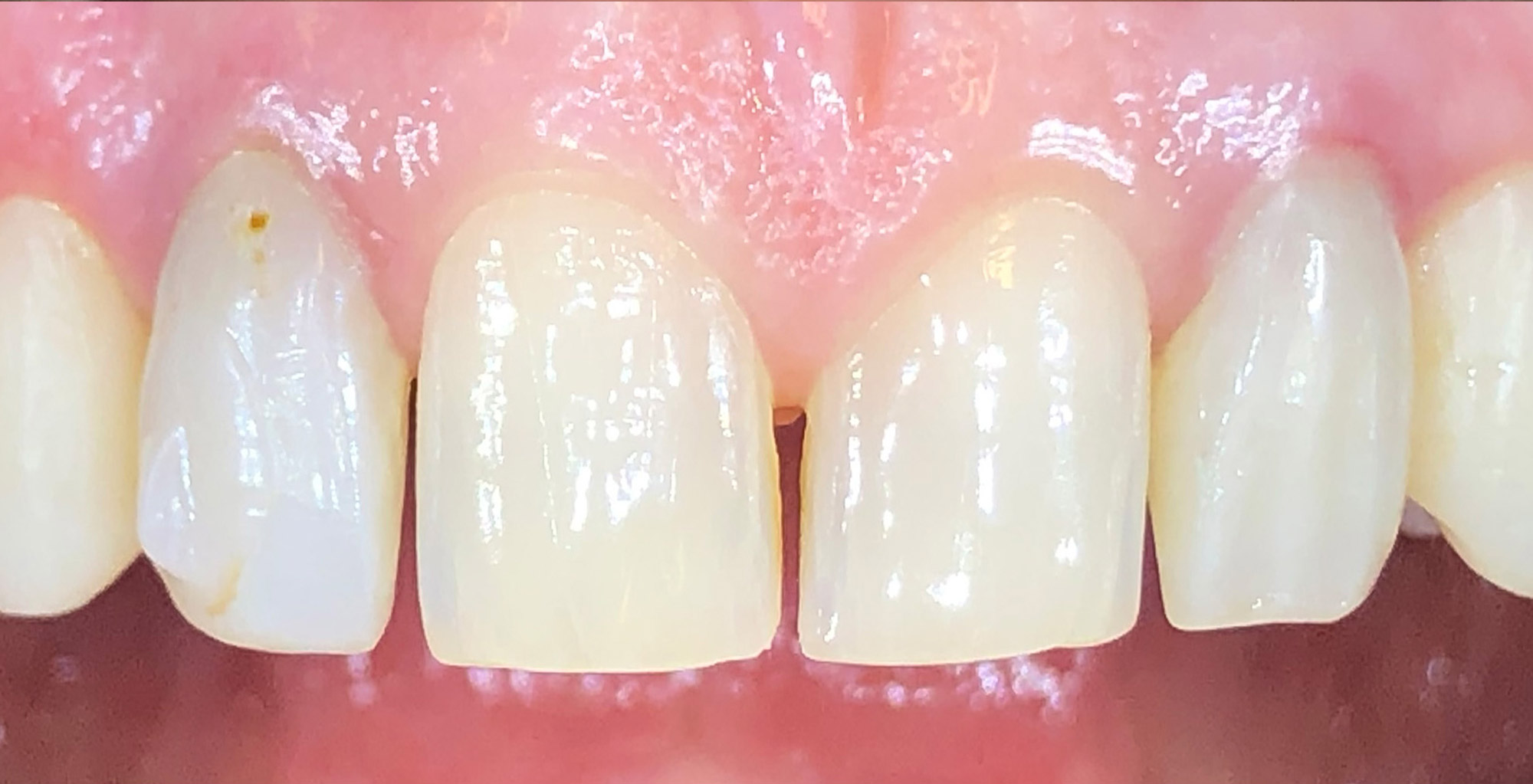
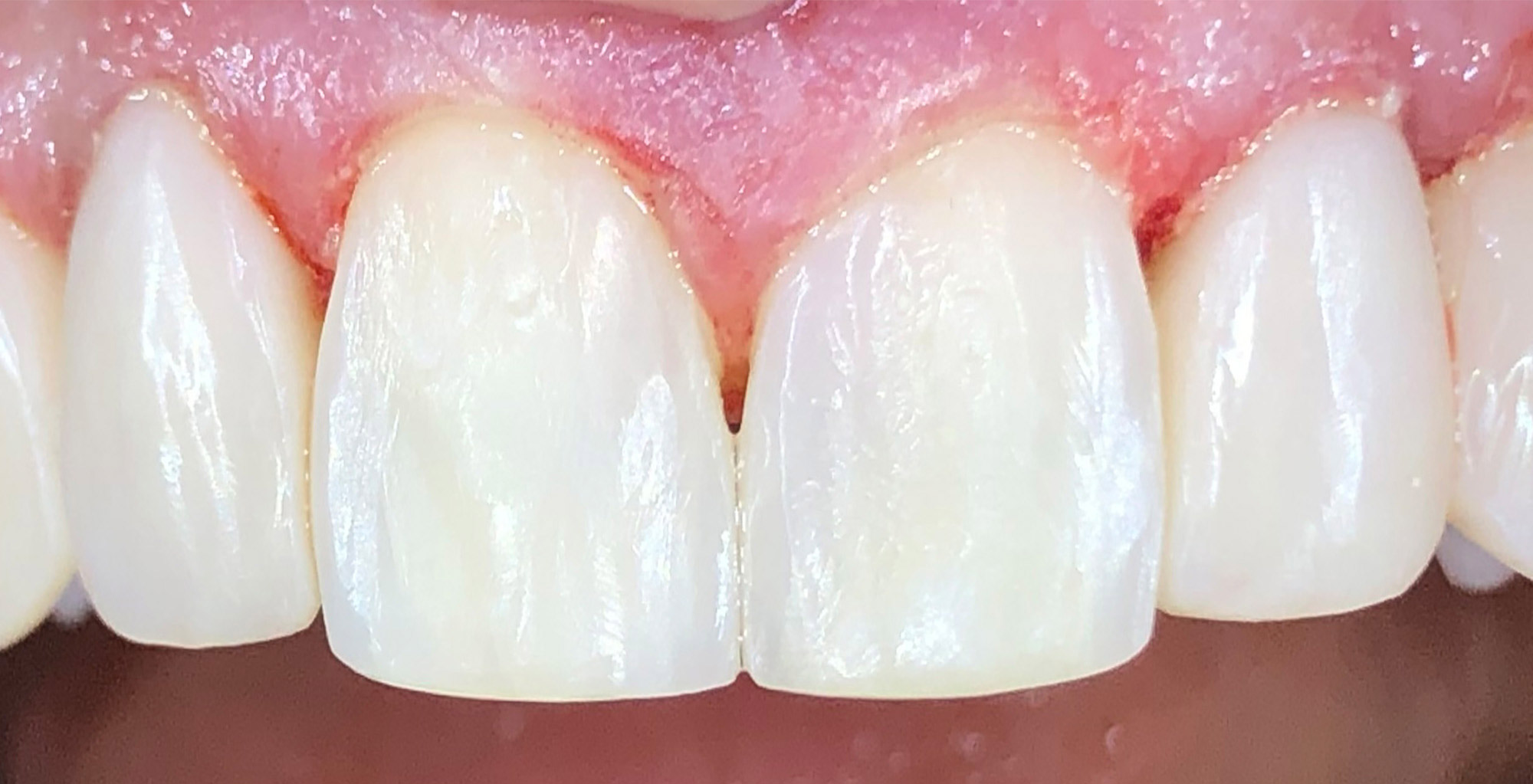
Aesthetic Gap Closure / Tooth Widening / Ceramic Veneers
Aesthetic gap closure and widening of the upper four front teeth using direct composite restorations, including the replacement of old veneers on the discolored upper lateral incisors. The treatment was performed following the completion of orthodontic alignment with clear aligners (in this case, Invisalign).
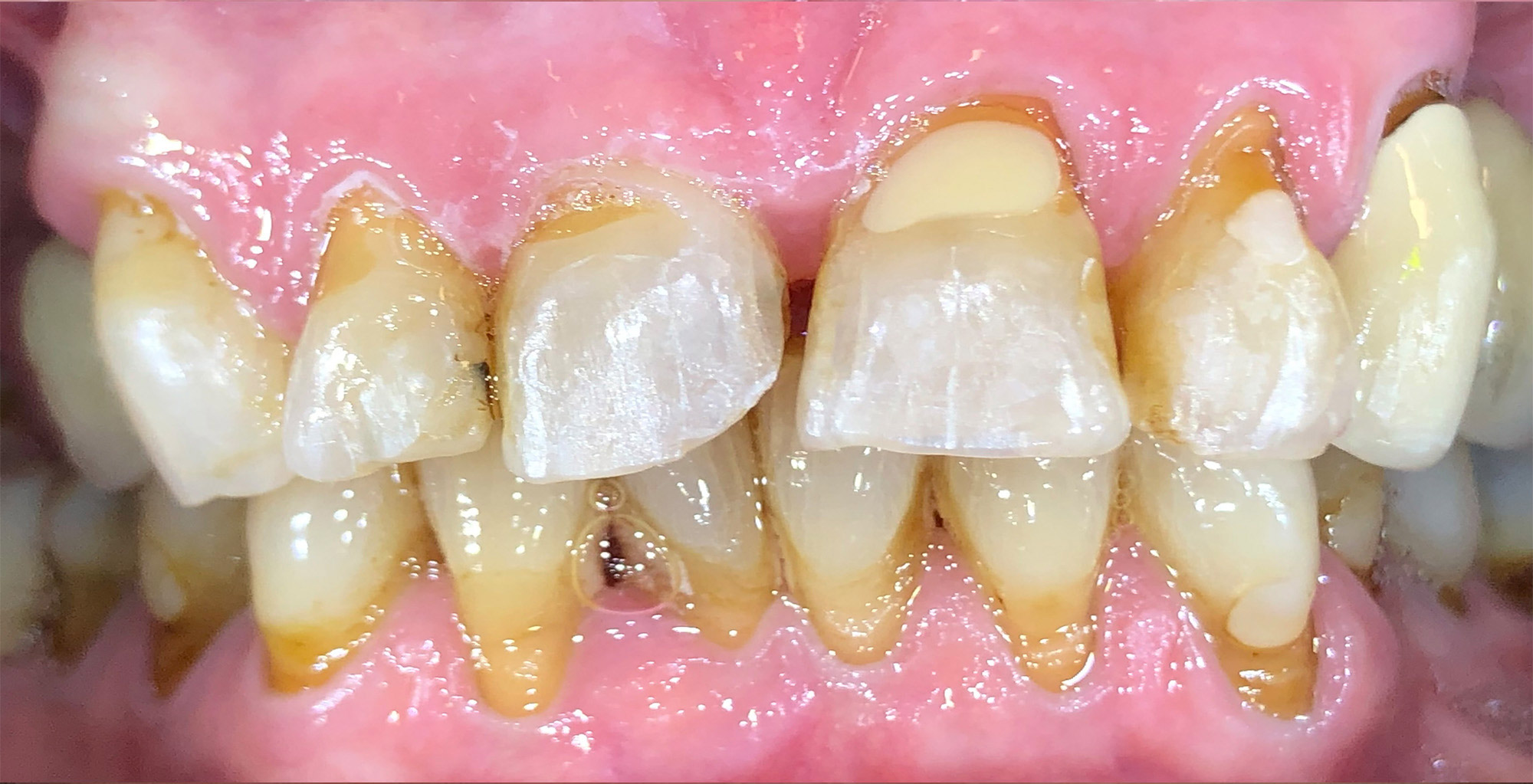
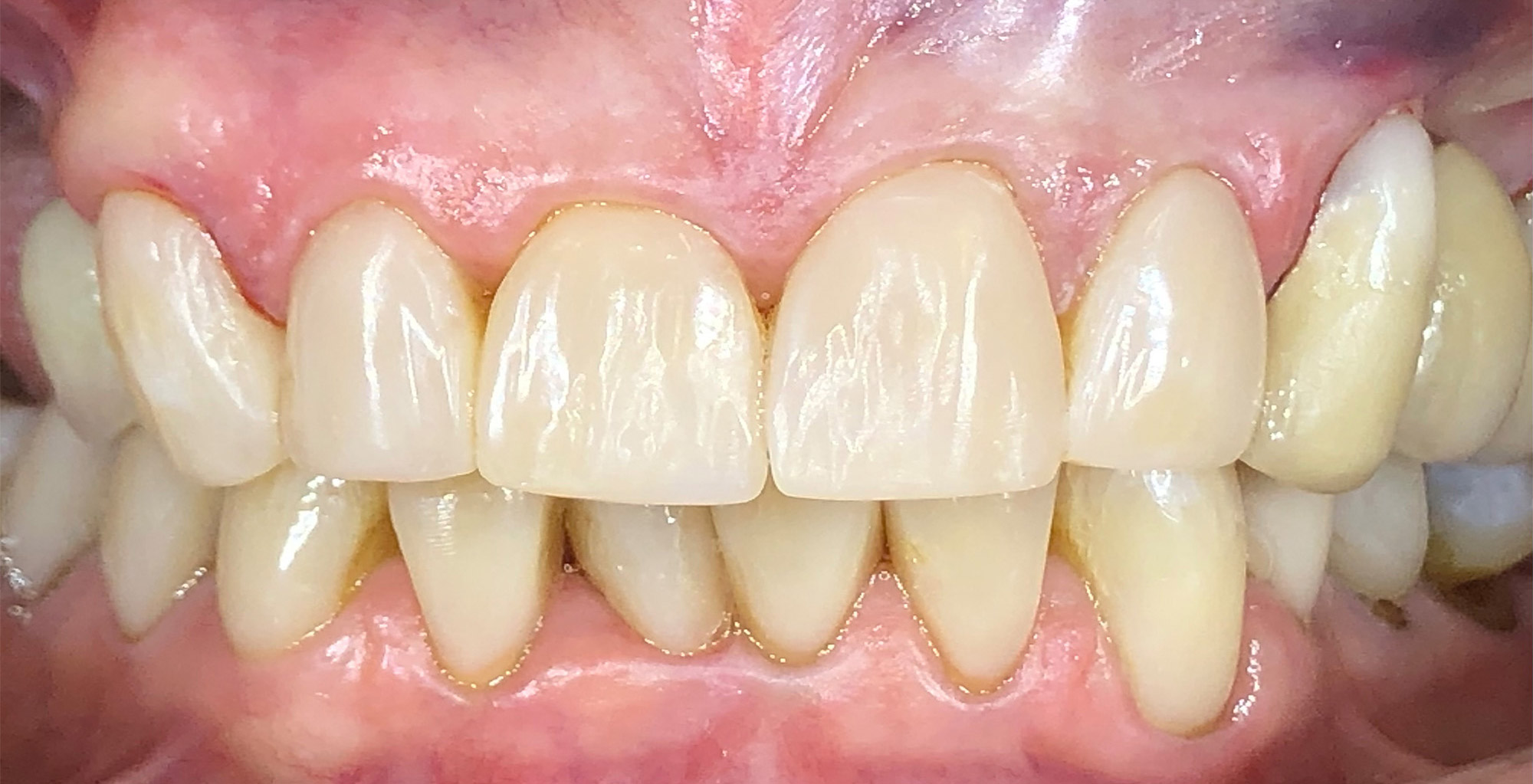
Aesthetic and Functional Reconstruction with Direct Composites
Aesthetic and functional reconstruction of the upper and lower dental arches using direct composite restorations. The treatment was carried out after completion of orthodontic treatment with fixed appliances (multiband-bracket system).
The patient wanted to avoid the high costs and invasiveness of crowning many teeth after her braces treatment. With our minimally invasive approach, we were able to help her achieve a beautiful smile and maintain healthy teeth. The exposed tooth necks around the upper bridge were also successfully masked using the same composite material.
The patient is very happy with the beautiful result!
